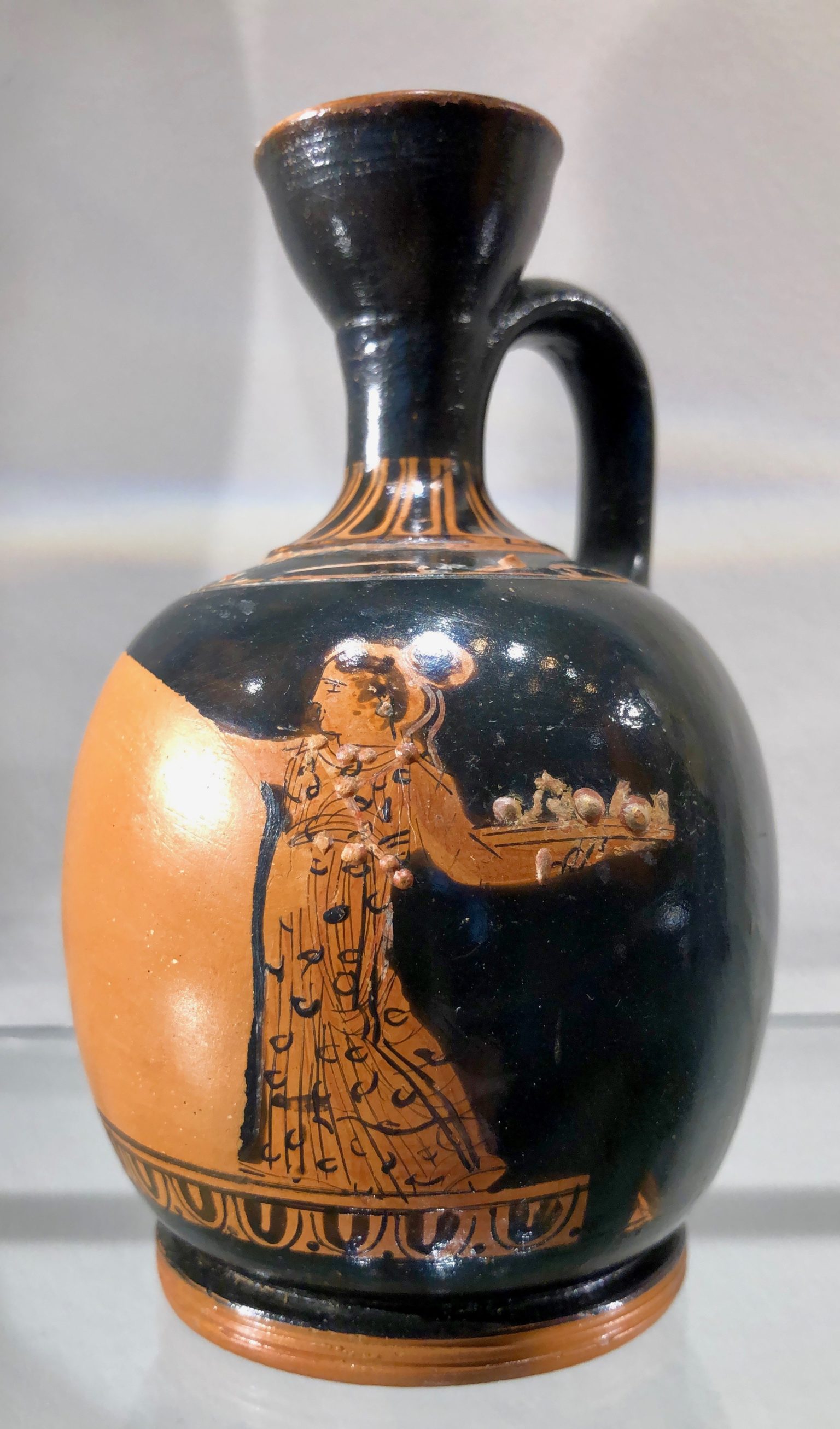
Burnt earthenware
Athens, Greece, ca. 420-400 BC
H. 11cm
An exceptional Attic RF squat-lekythos of the rich style depicting a sitting and a dancing female. Gilding on fruit visibly preserved. Attributed to the Meidias Painter.
Cf. CVA Geneva, 4.12,2; Lekythos Bruxelles, Nicole, Meidias, Pl. VII,3
Condition: Missing part at the body and handle professionally completed.
Provenance: ex. private collection of Prof. Dr. Hans (1918-1984) and Dr. Ines (1922-2013) Jucker, the Classical archaeologists, Bern, Switzerland
A lekythos is a type of ancient Greek vase that was used to store and pour oil, typically as part of funeral rites. It was a narrow-necked vessel with a single handle and a flat base. Lekythoi were made in a variety of shapes and sizes, ranging from small, hand-held examples to larger vessels that could stand on the ground. They were typically made of clay, and decorated with black-or red-figure painting, which often depicted scenes from Greek mythology or everyday life. The word “lekythos” comes from the Greek word for “oil.”
Item reference: CL1150
